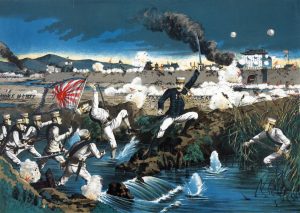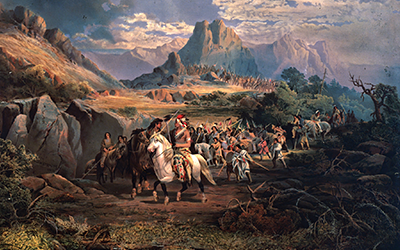Indigenous Responses to Imperialism: A Historical Overview
Introduction
The period of 1750-1900 was marked by Indigenous Responses to Imperialism, with indigenous populations around the globe responding in a myriad of ways to the encroachment of European powers. From the Americas to Africa and Australia, the responses varied from armed resistance to diplomatic negotiations, each shaped by the unique cultural, social, and political contexts of the indigenous groups involved. This comprehensive examination delves into these varied responses, the grievances against imperialism, and the emergence of anti-imperial movements that sought to reclaim autonomy and preserve indigenous cultures.

Native Complaints Against Imperialism
The late 19th and early 20th centuries intensified imperialistic endeavors, deepening the struggles of indigenous peoples. Key grievances included:
- Land Loss: Displacement was widespread as imperial powers seized lands for settlement or economic ventures.
- Resource Exploitation: Colonizers often exploited natural resources, disregarding the environmental and social impacts on native populations.
- Cultural and Religious Suppression: Efforts to assimilate indigenous peoples into European cultures led to the erosion of native customs and beliefs.
- Economic Exploitation: Forced labor and unfair economic practices were common, with indigenous peoples often receiving minimal or no compensation.
- Political Oppression: Self-governance was undermined as imperial regimes imposed their governance structures, frequently marginalizing native interests.
- Physical Violence and Genocide: Many communities faced brutal repression, with instances of genocide as imperial powers sought to cement their control.
These issues underscored the profound negative impacts of imperialism, often leaving lasting scars on indigenous societies.
Anti-Imperial Movements
In response to these injustices, several forms of anti-imperial nationalism emerged, characterized by:
- Political Nationalism: Aimed at self-governance, this movement sought to establish independent states reflecting the national identity of indigenous populations.
- Cultural Nationalism: Focused on the preservation of cultural heritage, this form promoted native languages, religions, and traditions.
- Economic Nationalism: Advocated for economic independence and resistance against foreign domination, emphasizing local industrial development.
- Social Nationalism: Addressed social inequalities and aimed for a more equitable distribution of resources and rights.
- Non-violent Nationalism: Utilized peaceful methods like diplomacy and education to advocate for independence.
- Armed Nationalism: Involved direct confrontation and armed resistance against imperial forces.
These movements varied in tactics and success, but many significantly influenced the eventual retreat of imperial powers and the reassertion of indigenous sovereignties.

Direct Resistance
Indigenous groups often chose direct resistance to confront imperial encroachments:
- Yaa Asantewaa War: Led by Queen Mother Yaa Asantewaa, the Ashanti in present-day Ghana fiercely resisted British colonial forces in 1900-1901.
- Tupac Amaru II: In Peru, Tupac Amaru II initiated a rebellion in 1780 against Spanish rule, becoming a symbol of resistance in the region.
- Indian Rebellion of 1857: This major uprising against British rule involved both sepoys and civilians, significantly altering colonial governance in India.
These examples highlight the range and intensity of direct resistance efforts, demonstrating the courage and resilience of indigenous populations in the face of imperial aggression.
New State Formation
Post-resistance, some indigenous groups successfully negotiated new state formations:
- Sokoto Caliphate: Established in present-day Nigeria, this caliphate emerged from a jihad led by Usman dan Fodio, creating one of West Africa’s most influential states.
- Zulu Kingdom: Under Shaka Zulu, this kingdom in southern Africa became renowned for its military prowess and complex social structures.
- Cherokee Nation: Prior to forced removals, the Cherokee established a robust political and legal system in the southeastern United States.
These entities reflected the aspirations for self-determination and cultural preservation among indigenous communities.
Rebellions Based on Religion
Religious movements also played pivotal roles in resistance:
- The Ghost Dance: This spiritual movement among Native Americans prophesied the restoration of their lands and way of life, directly challenging U.S. policies.
- Xhosa Cattle-Killing Movement: In response to colonial oppression, the Xhosa in South Africa undertook a massive cattle-killing ritual, aiming to invoke divine intervention.
- Mahdist Wars: In Sudan, the Mahdist uprising against Egyptian and British control was fueled by the charismatic leadership of Muhammad Ahmad, who proclaimed himself the Mahdi.

These movements, though often met with harsh suppression, underscored the deep interconnections between spirituality and resistance among indigenous peoples.
Conclusion
The indigenous responses to imperialism from 1750-1900 reflect a spectrum of strategies, from armed rebellion to peaceful resistance and state formation. Each response was deeply rooted in the cultural, historical, and social contexts of the respective indigenous communities. Understanding these responses provides valuable insights into the complexities of colonial interactions and the enduring spirit of resistance among indigenous populations. This historical overview not only honors their struggles but also emphasizes the importance of acknowledging past injustices as we move towards a more equitable global society.







